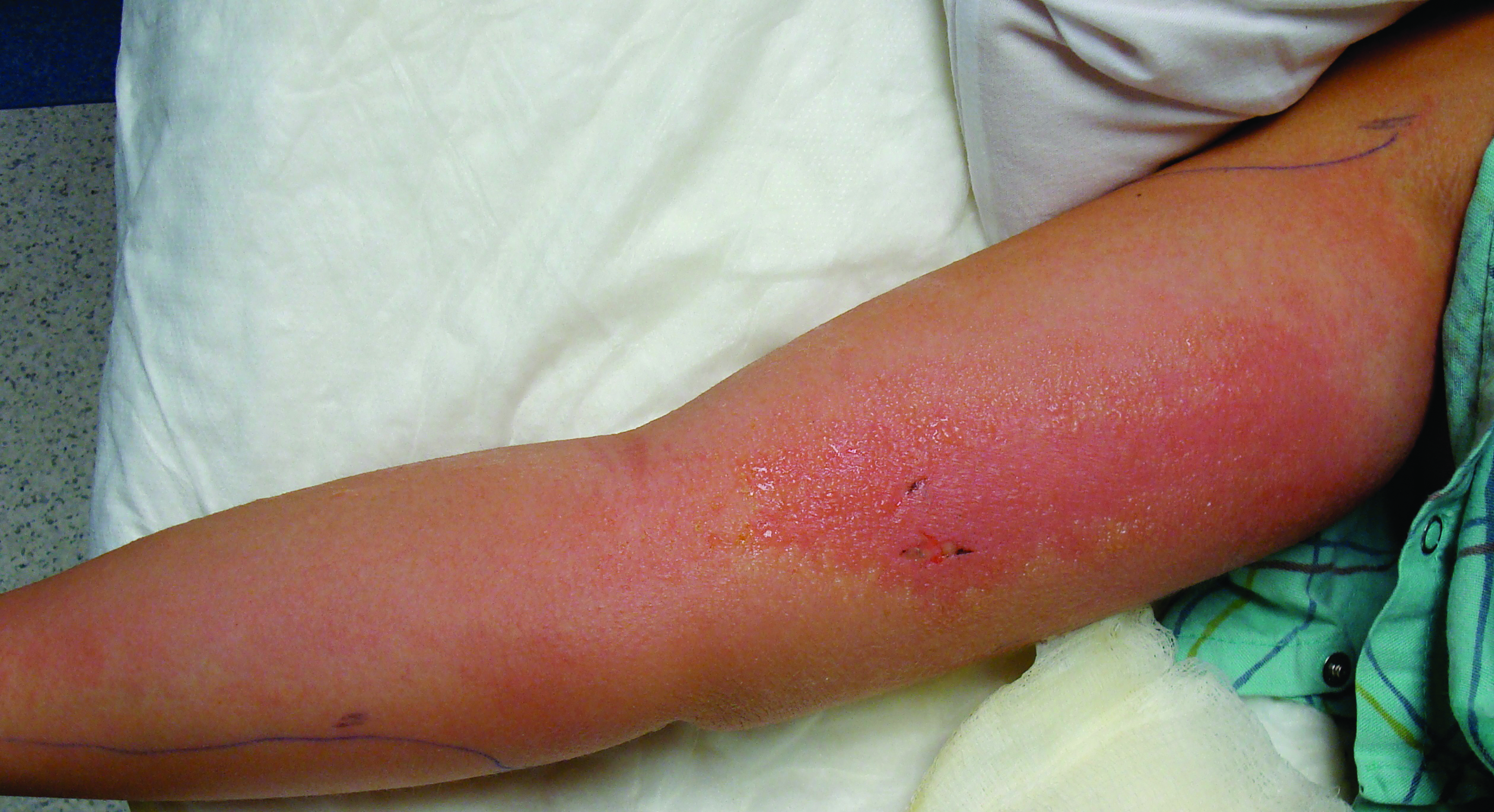A 6-year-old boy with black spots
Click Here to Manage Email Alerts
A 6-year-old boy was referred to rule out melanoma when he developed an asymptomatic “black dot” on the left tragus present for two days.

In addition, he reported subsequent development of mildly pruritic erythematous vesicles surrounding the black lesion and involving the anti-tragus. On exam, the tragus and anti-tragus revealed well-defined erythematous crusted vesicles and edematous papules coalescing into a plaque. At the periphery of the plaque is a well-defined 2 mm smooth shiny black papule. Further history revealed he was recently playing in the woods.
What is your diagnosis?

The diagnosis is black dot poison ivy.
Rhus dermatitis caused by poison ivy, oak or sumac is one of the most common causes of allergic contact dermatitis in the United States. These plants are part of the family Anacardiaceae and the genus Rhus, also known as Toxicodendron. Allergic contact dermatitis is a type IV, delayed type hypersensitivity reaction requiring prior sensitization before a reaction appears. It can develop throughout the year. The skin eruption is due to resins in the sap known as urushiol, a type of oleoresin, present throughout the plant.
Clinically, Rhus dermatitis typically presents as pruritic erythematous, edematous papules, plaques and vesicles often in a linear arrangement. The linear distribution is directly related to the areas of contact with the skin. The lesions can present as early as six hours after exposure, but are more commonly noted between 24 and 72 hours later. Black dot (or black lacquer) poison ivy characteristically presents with asymptomatic shiny black macules that cannot be removed with soap and water. Subsequently, there is development of typical pruritic urticarial and vesicular lesions.
The shiny black macules are due to oxidation of the yellowish- to-clear urushiol resin when exposed to air. The resin turns black after 24 hours either while still on the surface of the plant, on the skin or on clothing. It cannot be removed with washing. The black resin becomes lacquer-like by 72 hours. Referred to as “black spot” poison ivy, it is relatively rare in comparison to classic poison ivy but may be underrecognized. It is thought to occur when a highly concentrated amount of sap comes in contact with the skin such as when leaves or stems are crushed. When the oleoresin was diluted 1:50 in alcohol, application to skin in open air did not produce the black spots. A similar type of contact dermatitis can be acquired by contact with black lacquer-finished furniture because the lacquer is derived from a related plant.
On histopathologic examination of “black spot” poison ivy, an amorphous yellow material (the oleoresin) is found in the stratum corneum with areas of coagulation necrosis in the remaining epidermis. Neutrophils and nucleolar fragments may also be found at the site of necrosis. In the dermis, there is a superficial and deep lymphohistiocytic perivascular infiltrate. The yellow material and epidermal necrosis are absent on histopathology of classic poison ivy.
The lesions can be mistaken for a nevus or melanoma causing undue anxiety and prompting emergency room visits in some cases.
The treatment of “black spot” poison ivy remains the same as for classic poison ivy and includes washing the skin well with soap and water, application of medium – high potency topical steroids for symptomatic relief, and oral antihistamines for relief of pruritis. Topical antihistamines are not recommended because they can be sensitizing as well. In more severe cases, systemic steroids may be required for short periods. Resin adherent to fomites can remain for months, can repeatedly cause contact dermatitis and should be washed immediately. Clothing with black resin should be discarded. The black resin cannot be removed from the skin but eventually will peel off without scarring. Clinicians should be aware of this rare presentation of Rhus dermatitis.
For more information:
- Kurlan JG, Lucky AW. Black spot poison ivy: A report of 5 cases and a review of the literature. J Am Acad Dermatol. 2001;45(2):246-9.
- Schram SE, Willey A, Lee PK, Bohjanen KA, Warshaw EM. Black spot poison ivy. Dermatitis. 2008;19(1):48-51.
Spot the Rash is a monthly case study featured in Infectious Diseases in Children designed to test your skills in pediatric dermatology issues.
